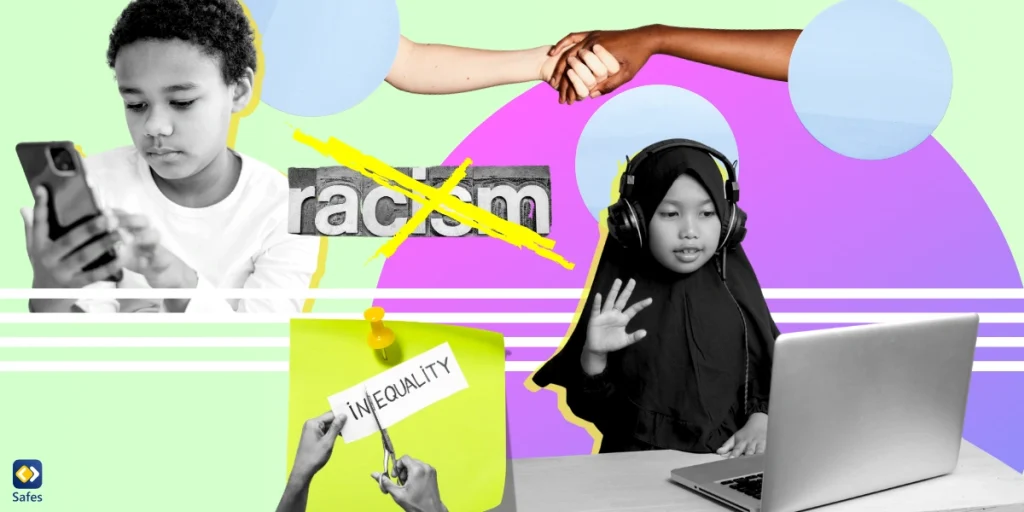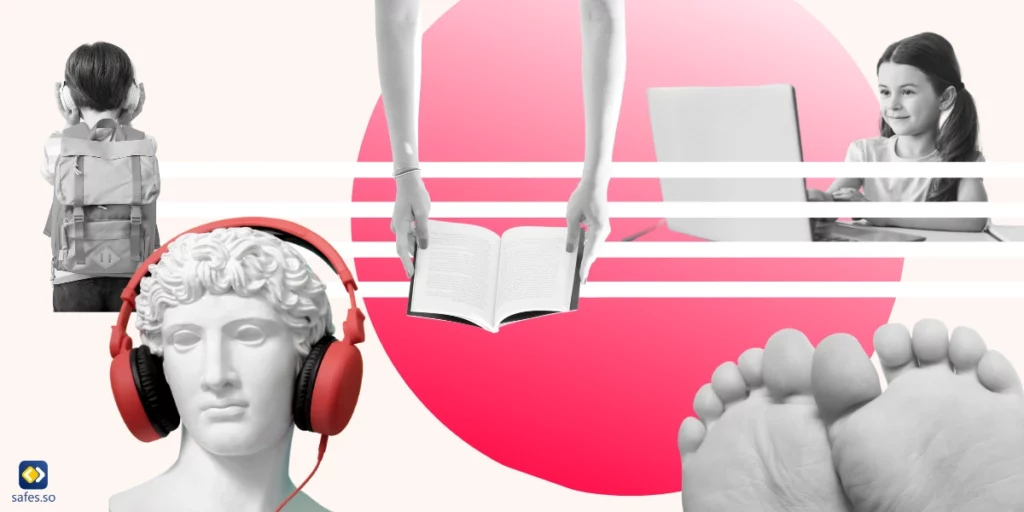Racism on the Internet has emerged as a pressing concern, crafting a hostile environment for children. The web’s anonymity grants individuals the liberty to spew hate, often targeting innocent users due to their race. Little seems to be done by social media companies to resolve this issue. What can we do as parents? This article aims to shed light on this pervasive issue. Here, we’ll try to offer some effective strategies to combat online racism, illustrate some examples of racism on the internet, and promote a safer digital environment for children.
Download and Start Your Free Trial of the Safes Parental Control App
Understanding Online Racism
Online racism, a digital manifestation of conventional racism, involves the use of internet platforms to disseminate racial slurs, stereotypes, and prejudices. There is a huge difference between the right to free speech and online racism. A person should never be mocked or degraded because of their race. According to the Anti-Defamation League, white supremacist actions have drastically increased in 2022. That’s why, as a parent, being conscious of such instances can facilitate the creation of a protective shield around your child, protecting them from the adverse impacts of racism on the Internet.
Different Faces of Digital Racism
Online racism can take various forms, making it even more challenging to identify and counteract. The type of racism depends, to some degree, on the respective society’s situation: In some societies, there are more racialized minorities and prejudices against certain races. Here are some of the common manifestations and examples of racism on the Internet:
Direct Discrimination
Online Harassment
Harassment involves intimidating or belittling an individual, making them feel degraded or humiliated. In the context of online racism, it can involve racial slurs, offensive jokes, derogatory memes, or even hostile facial expressions on video calls. While all social media users can be the target of such behaviors, children are especially at risk because they are more sensitive and inexperienced.
Cyber Victimization
This form of online racism occurs when a user faces negative repercussions for standing against racial discrimination. For instance, if a user reports an online racist, they may face backlash from the perpetrator or their supporters. This is directly associated with the abuser’s level of fame and popularity.
Microaggressions
Microaggressions are subtle, often unintentional, actions or comments that communicate hostile or derogatory racial slights. They typically stem from unconscious racial biases and can make the targeted individual feel marginalized or invalidated. To fight microaggressions, governments should invest in programs that will raise awareness of racial issues and the importance of respecting different races.

Online Racism: Real-World Examples
In the wake of the COVID-19 pandemic, the U.S. Department of Justice reported a drastic surge in online hate crimes against Asian American, Native Hawaiian, and Pacific Islander communities. In another instance, Jonathan Mok, a Singaporean student, was physically and verbally attacked in London, with his assaulters blaming him for the spread of coronavirus.
“Racism is not stupidity—racism is hate. Racists constantly find excuses to expound their hatred—and in this current backdrop of the coronavirus, they’ve found yet another excuse,” Jonathan Mok posted on his social media account.
The truth is that racism on social media has been increasing greatly. That’s because racists feel like they’re anonymous and that they can get away with their hateful comments. That’s why parents need to know what to do in the fight against online racism.
Mitigating the Impact of Online Racism: A Five-Step Approach
According to the American Academy of Pediatrics, being exposed to racism can have a lasting impact on children’s mental health. Combating racism on the Internet involves collective efforts from parents, educators, and society at large. Here are five strategies:
-
Embrace Cultural Diversity
Promote the idea of cultural diversity at home. Encourage your children to learn about and respect different cultures, traditions, and cuisines. This can foster empathy and discourage the development of racial biases.
-
Counter Hate Speech
If you encounter hate speech online, don’t hesitate to call it out. Teach your children to stand against such behavior and report it when they see it. Remember, silence can often be seen as complicity.
-
Instill Kindness and Empathy
Teach your children the value of kindness and the importance of respecting differences. They should know that all people are valuable, no matter their racial group or ethnicity. Such values can counteract the negative influence of online racism.
-
Stand Against Harassment
If you witness an instance of online harassment, show your support for the victim. Make your presence known and offer help if it’s safe to do so. This way, the young people around you will learn to do the same when facing racism.
-
Support Human Rights Organizations
Support organizations like UNICEF that work tirelessly to protect children’s rights and promote racial equality.
Leveraging Technology: The Safes Parental Control App
Technology can be an ally in your fight against online racism. The Safes Parental Control App is a powerful tool that allows you to monitor your child’s internet use, control their online exposure, and shield them from harmful content such as racism on the Internet.
With features like content filtering, time management, and app blocking, Safes empowers you to create a safer online environment for your child. Plus, since many online racism cases happen on social media platforms, Safes offers personalized features to monitor children’s activities on these platforms. You also have the option to monitor and remove any racist content from your child’s phone.
Ready to provide your child with a safer online experience? Start your free trial of Safes today! Sign up now to enjoy advanced parental control features at no cost. Secure their digital journey with us – get started today!
Final Words on Protecting Children from Racism on the Internet
There are still some people out there who believe in white supremacy. The battle against online racism is a shared responsibility among all internet users. It requires collective action grounded in empathy, respect, and kindness. By understanding the various forms of online racism, educating our children, and leveraging technology, we can create a safer digital world for the generations to come.
Your Child’s Online Safety Starts Here
Every parent today needs a solution to manage screen time and keep their child safe online.
Without the right tools, digital risks and excessive screen time can impact children's well-being. Safes helps parents set healthy boundaries, monitor activity, and protect kids from online dangers—all with an easy-to-use app.
Take control of your child’s digital world. Learn more about Safes or download the app to start your free trial today!




